|
|
Post by kenpossum on Jan 22, 2015 13:31:24 GMT -8
This post will be in two parts. The first - a few shots from yesterday (Jan 21), and the second - a discussion on human caused problems photographing owls and suggestions as what we as responsible photographers can do.  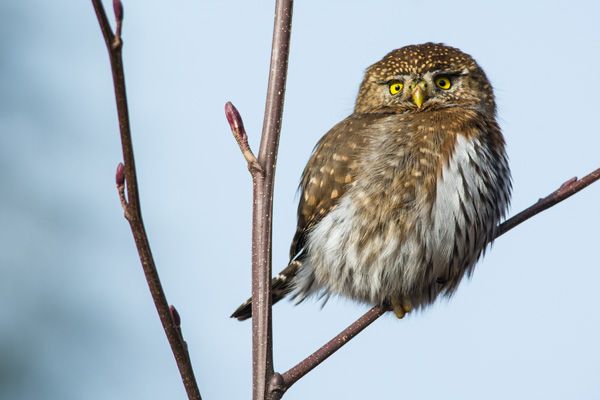 He flew right to us, 25' away. No cropping required.  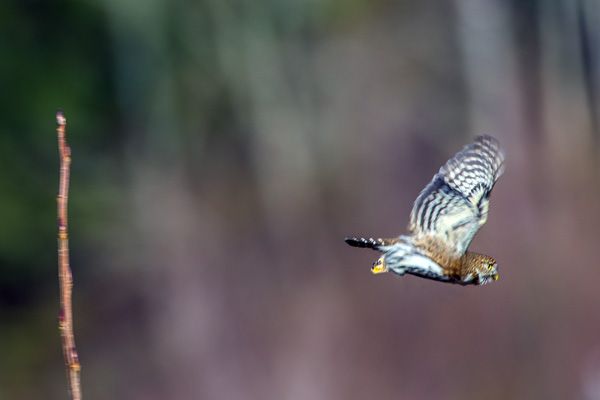 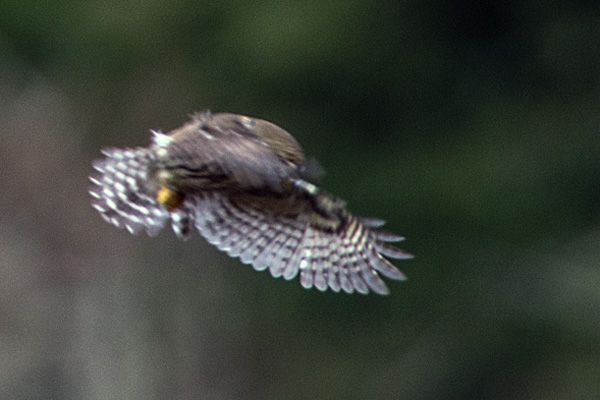 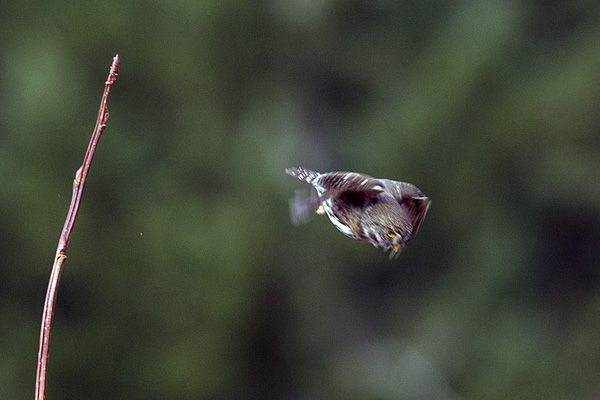  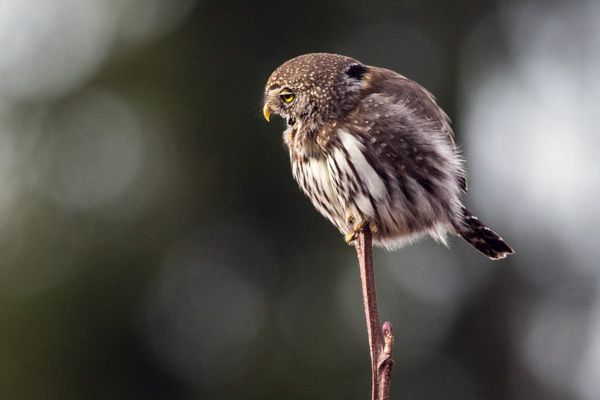  Watching for a vole. 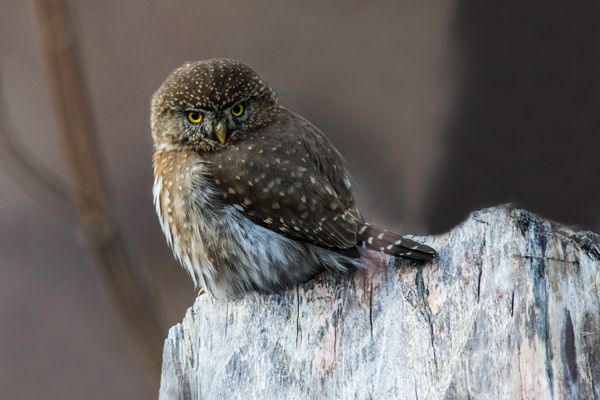 Part 2 - The problem. Most of the viewers on this site are responsible bird watchers and bird photographers. We join groups like this to share our experiences, our photos, and sometimes our information about local birds in our area. The problem is that some who visit sites such as this want mainly the bird location information that we sometimes post. This is not a bad thing in itself, as sharing such information can be a very positive thing. It allows us all to go out and capture photographs of species that we may not have gotten. I have used location information posted in this group and greatly benefited. Thank you to everyone who has helped me out. I have also posted location information for others, and have few regrets. However, not everyone who views this site is responsible. This has become very apparent in the last few days when hords of photographers, mostly from west of here, descended on the Pygmy Owls at Elk View Rd. I would estimate that 90-95% of those photographers were very responsible. The remaining few were idiots. (Sorry about the name, but that was a kind one compared to others I have heard recently). These few constantly chased (ran) after the owls, were far too close to them, and ignored the requests of those responsible photographers to stop. Maybe they were too excited about seeing a beautiful wee bird outside of a bird cage, or at the zoo. Maybe they had no knowledge about bird behaviour and just didn't know better. Idiots just the same. Maybe they have limited photograhis skills and believe the only way they can hope to get a clear, sharp image of a wee bird is to be very close. So sad - all that money spent on that huge lens, and so few little grey cells allocated to how to use it without being an idiot. Sad. Maybe is is a cultural thing where listening to others commenting on their actions is a foreign concept to them. Idiotic. maybe they are just bullies - to the birds and to the men and women around them. Stupid idiots. Maybe they belong to the "me, me, me" generation and are only concerned with their shot, and d**n anyone that get's in their way. Need I go on. So, we have a problem. The question is what do we do about it? (some suggestions in a wee bit) |
|
|
|
Post by cathyo on Jan 22, 2015 15:24:00 GMT -8
I'd like to be kind and think that these people simply are not well informed and we need to find a way to better educate them. Anyone who follows this site should have been able to find the guidelines for good manners, but there are always some people who don't about rules unless their behaviour is pointed out to them. Its like the people I see walking their dogs off leash at the Heron Reserve and other parks who tell me they never saw any signs. Most of us tend to be polite and ignore them, but that just encourages the behaviour.
I think we should do a couple of things: try to be more pro active with education, and try to tactfully inform people of their mistakes when the opportunity arises.
|
|
|
|
Post by butterfly on Jan 22, 2015 15:39:28 GMT -8
We agree with Cathy. If people knew they were not only disturbing the bird but chasing its food source to deep cover and destroying the area theses creatures call home, they might be more understanding and behave more responsibly. What looks like a clear cut to us, hides food for other creatures. We don't think people mean to be irresponsible but are not educated to why their behaviour should be improved.
Thanks for starting this discussion.
Bruce and Joanne
|
|
|
|
Post by kenpossum on Jan 22, 2015 16:05:14 GMT -8
Maybe I am a bit harsh on them as I can agree with the comments above ... for some of them. However, there were some that were just nasty to other photographers who took the 'soft' educational approach. My experience was this. Yesterday, I spent 4 hrs at on Elk View, and met and talked with about 25 - 30 photographers, and explained the situation. ALL 30 responded very well, and appeared concerned. (Some less than others, I admit). However, all 30 were respectful to the owls (and myself). I did request that to ensure that everyone got great photos, and the owls were not "photographer stressed" they do the following.
1. Follow the bird from location to location. (they would anyway) but don't run. Follow very slowly and allow the bird get used to you.
2. Keep a reasonable distance ie 40' min from the bird.
Here's what happened.
1. Everyone did just that. Not one idiot - or even close to one.
2. The owls flew about everywhere, and the group followed them slowly but stayed on the roads most of the time. Any one who did leave the road did so slowly and quietly.
3. The owls showed no signs of stress, and continued with their hunting.
4. on a number of occasions the owls flew to the photographers and perched within 25 feet away and stayed! On one occasion two owls did this at the same time on opposite sides of the road. The photographers were confused - which one to photograph? Both were in ideal spots! Grins and smiles were everywhere. They all learned what works - Keeping your distance and not to run after them.
Result - a great photo day, and dozens of photographers all got close up "calendar shots" of this wee bird. Also - numbers of photographers meant nothing. You could have had 50 or more there, as long as they were responsible.
(now in all honesty, I did warn them all that if anyone refused to be respectful of these "guidelines", I would be taking their portrait (after all, I am a portrait photographer), as well as their car and licence plate, and I would be handing those photos over to the Conservation Office. I would also be stepping in from of their lens, walk up to the owl and shoo it away. Photo time would be over and have a nice trip back west. I admit, I am not a nice person at times, but that would only be a last resort and be used only with the few individuals (2-3) that did not respond well to the approaches mentioned above by Cathy, Joanne, Bruce and others. What is that saying - "Speak softly but carry a big stick". Yes, I can be "rough" at times, but I also met photographers who wanted to let the air out of a couple of individuals tires on Sunday and Monday morning. Let's hope it never comes to that.
I also must admit that my "message" was not given to or directed to everyone, only the folks I did not know. There were so many great photographers and birders there as well, that I would have been preaching to the converted, and to birders with a lot more experience than I. They know everything mentioned above, and I constantly learn from them as well. Mike A. told me that he had the same great experience Sunday, and had the owls flying to him perching even closer than 25 feet. His closeness to the owl was misunderstood by some who thought he had approached the bird, and some tempers were raised. Often, two sides to a situation.
Another factor which was appreciated was that the site was visited by a Fraser Valley Regional District officer who had been receiving complaints about overly aggressive photographers. He checked out the situation, talked to everyone, and I believe was impressed by how a large group of photographers could be so responsible. Positive, positive, positive!
|
|
|
|
Post by expiallyd on Jan 22, 2015 16:28:31 GMT -8
I wonder how a photographer thinks that s/he will get a better shot by running up to a bird ... surely that just frightens it away. Sorry to hear of this behaviour.
Anne
|
|
|
|
Post by kenpossum on Jan 22, 2015 16:33:34 GMT -8
Anna I just don't know. For myself, a long time wildlife photographer I found that running up to a grizzly doesn't work either, but some try every year. Idiots!
|
|
|
|
Post by oldfulica on Jan 22, 2015 17:52:44 GMT -8
Good stuff Ken. I see Boundary bay is having the same problem with a Long-eared Owl. I personally love to photograph owls also but would prefer not to have the "exact" location posted publicly even if it means not getting a picture. Can you imagine the circus if a Great Gray, Hawk Owl or Boral location was divulged?
|
|
|
|
Post by birderbert on Jan 22, 2015 18:52:07 GMT -8
No one could ever have anticipated the Photographic Frenzy surrounding these Owls! In retrospect, posting the location of these guys was a mistake. It's a double edged sword though, because if the location had not been posted I might not have had the privilege of photographing these little creatures. I might suggest that where Rare or Unusual Birds are concerned, that Locations not be posted and the info only shared with photographers you know to be responsible. Respond only to Friends [of course] or Group Members [Private Messages?] Request that they in turn are very careful in sharing the location. This will hopefully reduce or eliminate the chances of the Birding Trolls getting the info!
|
|
|
|
Post by kenpossum on Jan 23, 2015 15:01:19 GMT -8
I agree with the two folks above. We all like to receive info on where a unique bird is located, but to post it publicly is a grave concern. What I will do in the future is post the general location. I will request that any one wishing the exact loc. give me a call so that I can screen who will receive the info. I have done this in the past on my own facebook page. If the location is on private land, I will personally take people there that I trust, but limited to 4-5 at a time. This also respects the landowners concerns, as I don't wish to create a problem such as what happened with the Northern Hawk Owl in Ladner a few years ago. I also treat the landowners to bird seed and/ or photos of "their" bird. So, if you have a unique bird sighting, I hope you will let me know (604-858-0544), AND if you wish for me to call you sometime, let me know your phone no. (kpugh@shaw.ca). I think forming our own private networks may be the only way to handle this problem.
|
|
|
|
Post by birderbert on Jan 23, 2015 15:41:54 GMT -8
I agree Ken! Maybe even take the Road Name out of any SUBJECT fields?
|
|
|
|
Post by Gord on Jan 23, 2015 21:18:12 GMT -8
This is quite the situation and not an easy one either to figure out. Happily there's sincere and caring people brainstorming here which is pretty encouraging to see.
I'll add a few thoughts of my own for consideration.
Ill start with the following statement:
I dont think anyone out there wants to hurt a bird while taking its picture, be known as someone who hurts birds to get their pictures or have to look at their pictures later and wonder if the bird is still alive after it was left in the field hungry when the photo session ended. But it is possible to get people to come around and act properly with some effort and respect. It is a fact people follow our site and that's sure an opportunity right here to spread the word and share how to effectively use our cameras without doing harm. But there's an element of human nature at work here which is the reason there's a problem.
Education is clearly an important part of all this. Actually it's probably step number one. We are lucky to have great bird photographers out there who can spread the word, advocate for responsible photography and help mold a culture which makes harassing wildlife undesirable. I could name many good bird photographers. To keep it short, Ken, Bruce and Joanne are fantastic representations of exemplary ethics and the results are great photos at no cost/damage to their subjects. It can be done. All who are concerned can do their part by sharing the word and setting a good example. The same way people learn of photographic opportunities can be the same way they learn about how to take advantage of the opportunity responsibly.
How to spread the word is equally important. And it's not easy. I've had my blood boil watching someone unmercifully chase a owl for a picture or seen photographs in books of birds at nests and the trimmed foliage that allowed the photo. The natural and understandable response to such behaviour is outrage and a sharp tongue at the offender. But I think that's the worst thing to do. First what that does is it conveniently takes attention off the issue of harassing the owl (etc) and turns the focus to you, the guy who's giving the guy heck. It's also a natural response to want to save face; especially if someone is being rudely called out in front of a crowd; crowds being a typical scenario for these issues as we're seeing on Elk. So now you have a person who's latched on (conveniently) to the fact you're being 'rude to him/her' and now the issue's doubly hard. Spread the word with care and tact. And if the person continues doing what they're doing, well that's just saving face hard at work. And hard as it is to do, I think one has to leave it there and resist the temptation to escalate the situation to 'make them listen'. But trust me the person heard you and will go home and recall your words and their actions. If you've not given them an excuse to hide from the truth of their poor behaviour with your speaking harshly all that's left to consider is their behaviour. This method may seem slow to show results, but I think long term it will produce what we need to see. Otherwise we might make people stubbornly (conveniently) doing what they want 'to get back at you' so they can keep doing what they can still convince themselves is ok to do.
Short term, yes, we can be careful what we share online. Already the guidelines state that roosting owls and nest sites are not to be shared in detail. I'm actually shocked a pygmy owl has generated such attention. It's a shame to have to hesitate to share with others because of the poor/uneducated actions of a few will spoil it for everyone else. Im not sure if keeping an owl sighting to a select group will work. It doesnt take long for the word to spread (everyone has a close friend they confide in it seems) and the perception of a secret club (although made for an understandable reason) might not be an overly positive one. But it is up to each person to do what they feel is suitable and I certainly won't judge.
Interestingly in parks and protected areas it is against the law to harass wildlife or to travel off trail. Fines can be levied. Harassment is defined in the Wildlife Act and the actions by unethical wildlife photographers falls in this definition. Enforcement on Crown Land is a grey area partially because there is unfortunately not enough officers out there to do it.
Thanks to all who have shared here or in the field with others. Each of us doing our part will get results I'm confident in it. Don't give up.
|
|
|
|
Post by neal on Jan 24, 2015 11:49:17 GMT -8
Good discussion. Always a good thing to remind everyone that the well being of the birds is more important than one photograph!
|
|
|
|
Post by kenpossum on Jan 24, 2015 21:06:50 GMT -8
Gord - We are so fortunate to have your wisdom on this site. Tact, diplomacy ... I need to build on that (so sayeth my wife), and I will definitely use that as the first step in dealing with those .... (dang - I used to use the word "idiots" here. Maybe ... "lost souls" would be appropriate. I am at Elk View This Sunday. Hopefully it will be a better day than last Sunday.
|
|
|
|
Post by Chris on Jan 24, 2015 21:52:53 GMT -8
Won't add much, except that I am surprised that a Pygmy Owl has created this much attention. They are somewhat regular. While I haven't seen too many in the valley, with proper research and some luck one could find a Pygmy Owl within the region. In fact, lots have been reported this winter.
|
|
|
|
Post by cathyo on Jan 28, 2015 9:25:38 GMT -8
Good response Gord - it means we have to bit our tongues and think a bit before lashing out at someone we feel is acting inappropriately.
|
|






















